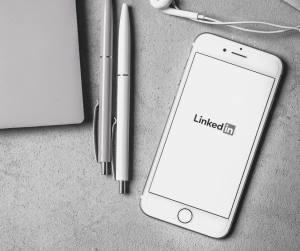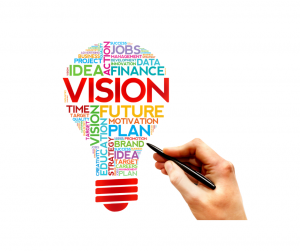 Although 2020 has brought so many changes, LinkedIn continues to be the largest online business networking platform and a top influencer in how we leverage and advance our careers. Learning how to negotiate the ins and outs of this powerful social media tool is to everyone’s advantage. Here’s 9 Top Strategies for Diving Deep into LinkedIn:
Although 2020 has brought so many changes, LinkedIn continues to be the largest online business networking platform and a top influencer in how we leverage and advance our careers. Learning how to negotiate the ins and outs of this powerful social media tool is to everyone’s advantage. Here’s 9 Top Strategies for Diving Deep into LinkedIn:
Create a profile with a professional photo and pertinent details. It might seem obvious, but attention to detail is important when looking to network and make significant career connections. Be succinct in your accomplishments and don’t forget to include your efforts at volunteerism. The goal is a well-rounded profile, just as when you’re applying for a new position. Think of LinkedIn as your online resume.
Make meaningful connections. The first connections are the obvious ones, but then what? Browse your connections’ connections to see if there are any that may be an acquaintance, and think about adding those. Don’t send blind connection requests—include a brief message of how you have a mutual connection, etc. As you start to build your network, requests will organically come to you. You’ll be surprised how it grows!
Post regularly. Creating meaningful content that is of interest to others (that they in turn may share) is key to broadening your LinkedIn presence. Also, be sure to share articles you find interesting. This is another method of organically growing your network.
Ask some colleagues for recommendations. Having a balanced number (not one or two, but not necessarily dozens, either) of well-written recommendations are a plus to those looking at your profile. They can often lead to new opportunities when making connections.
Always keep an eye on career trends and available positions. You may be perfectly happy on your career trajectory, but don’t underestimate the power of keeping an eye on that Job section of LinkedIn. Why? Because it allows you to keep up with industry trends, see who’s hiring and how they may be expanding positions in their organization, and keeps you up to date with the key words, phrases, and HR terminology that’s in the forefront.
If you are unemployed, it is especially important to look on LinkedIn as much as you would any other source for potential jobs. The advantage here is that LinkedIn is built on people and connections, rather than sending a blind resume to an email box of the HR Department. Be sure your profile is ultra professional, and you may choose to tactfully state that you are looking for an opportunity in your field. Let a few key connections know you are searching for that next opportunity as they may know of a possibility or be able to introduce you to some of their key connections or a great recruiter.
Use Company Profiles to your advantage. Read about companies you are interested in and/or are highly regarded in your field. You can also search to see if you have any connections at a particular company. Continuous learning will pay off, if not immediately, but in the future. You never know when an opportunity will present itself, and having knowledge of your desired company is always beneficial.
Follow influencers in your field and join LinkedIn groups of like-minded individuals. We know that many experts and those at the top of their field do not accept invites for connection; you may wonder how you can form a relationship despite this brick wall. Mutual connections are of course important, but so is joining groups that those people may have started or are actively involved in. Just keep connecting, and even though the connection that was your goal may not transpire, you’ll be sure to meet many interesting and influential people along the way.
If you’re recruiting for a position, check out Recruiter and Recruiter Lite. It’s an excellent option to make connections and meet new prospective candidates and there are free trial versions. The search capability is excellent, and again, you’ll meet people who may keep you in mind for the future.
If you are unemployed (or as I like to say “between successes”), it is especially important to look on LinkedIn as much as you would any other source for potential jobs. As with anything else, you’ll get out of LinkedIn what you put into it. Remember that networking in a professional atmosphere is as key as in a more personal, social arena. Spend some time on this network, and you’ll be certain to reap the rewards!
I wish you a very prosperous 2021! As always, I’m available to assist you in your journey. For more information on my coaching services, visit my website at www.mbrownassociates.com.
 There’s something special about the end of one year and beginning of another. It’s not unlike a fresh start or that “new car smell” so to speak. We’re presented with the opportunity to map where we’ve been, where we stand, and where we’re going. There are many tools to accomplish this, but the classic Vision Board is one of the best. My blog today focuses on making vision boards work for you—and there’s no better time than the start of a fresh new year!
There’s something special about the end of one year and beginning of another. It’s not unlike a fresh start or that “new car smell” so to speak. We’re presented with the opportunity to map where we’ve been, where we stand, and where we’re going. There are many tools to accomplish this, but the classic Vision Board is one of the best. My blog today focuses on making vision boards work for you—and there’s no better time than the start of a fresh new year!
What is a Vision Board?
By definition, a vision board is a methodology to create a visual representation of one’s goals, based on the theory that physically seeing this repeatedly helps bring motivation, direction, and unleashes possibility. It’s a powerful tool that reinforces the theory that our thoughts are powerful and visualization of achieving goals is part of achieving them. Athletes, for example, can draw on the power of vision boarding to manifest their goals. Entrepreneurs also find value in this tool as a way to chart their business aspirations. You’ve heard the adage, “Energy goes where attention flows,” right? This is the premise in a nutshell.
How and why do they work?
We all know we can train our minds; the brain itself, though, is more malleable then we might imagine. We can in fact train our brains for success using tools such as a vision board. Our brain has this ability due to process called neuroplasticity, which is the ability to learn, adapt, and in essence rewire itself. It’s what allows people to recover from traumatic injuries. Surely, if it’s powerful enough to do that, our brain can help us reach our goals, right?
Aside from the scientific point of view, the simple concept that vision boards are a tool to unleash our potential is one that we can utilize, be it for career, self-improvement, or personal goals.
Who needs a Vision Board?
We can all benefit from a vision board, whether you’re a student, an entrepreneur, a manager, or brand new to the job market. Everyone can use one in their personal life in regard to relationships, aspirations, self-improvement, etc. The possibilities are limitless.
Creating your Vision Board
You’ve decided to create one – now what? The first step is to do a lot of introspection and self-reflection. What goal(s) are you striving for? What dreams do you wish to bring to reality? There are plenty of helpful free worksheets to help this process along.
Next, decide if you will create a physical or digital vision board—or both. How do you respond best to visualization? By being able to look at, touch, and see a physical product? Or, does a phone or laptop background speak to you? Perhaps, if you decide to create a physical vision board, you can take a photo for your phone and laptop backgrounds. There are also apps for this purpose. Remember, the more you see it, the more it ingrains into that malleable brain of yours.
You’ll want to draw from variety of images that are powerful to you—people that are important, places you love, and words that inspire you to achieve goals. It can be physical things such as a cottage at the beach or a classic car, and it can be images of how you want to make a difference in your community, or a comfortable life with less stress. It can and should be a little snapshot of your desires in relation to your goals, and it doesn’t have to be anything fancy. Words and images cut from a magazine work just fine. Maybe there’s some original artwork you can add, or photography. It’s really only limited by your imagination. Think postcards of a favorite destination, your favorite quote, a graphic depicting your goal. It’s those images and words that speak to you and create a spark when you see them that’s important.
My Vision Board is assembled—now what?
The key is to place your vision board where you can see it daily. One good suggestion is to look at it twice a day, perhaps at the beginning and end of your day, for that visualization reinforcement it’s intended to create. By your desk in your home office or by your bed are two good places to place it. If it’s a background on your phone, you’re seeing it many times per day. Whatever works for you and keeps those goals top of mind is an individual preference—just make sure you’re viewing it regularly.
Should I update my Vision Board?
In short, yes; goals can change and circumstances can shift our plans. The idea is not to give up on your original goals, but to be fluid and recognize when things have taken a different direction. Let’s face it, sometimes we make powerful changes in our life’s journey that will serve us better, and it’s important to include these on your vision board. They are easy to change—paste on a new picture, remove what is no longer a goal, and reset your intentions as needed.
Free Tools for Vision Boards
Check out these great resources and remember, as with anything, the key is getting started and focusing. Take the time to do this during the holiday season as we approach 2021 – you’ll be glad you made this wise investment in yourself!
31 Free Vision Board Printables to Inspire Your Dreams
Jack Canfield’s Vision Board App
Create a Virtual Digital Board with PicMonkey
And in full disclosure, creating vision boards has been a very powerful tool for me as well as my clients. It really helps to keep us focused! I encourage you to try it and let me know what you discover!
I’d like to take this opportunity to wish my readers a joyous holiday season and a prosperous New Year! For more information on my services, visit my website at: http://mbrownassociates.com/
